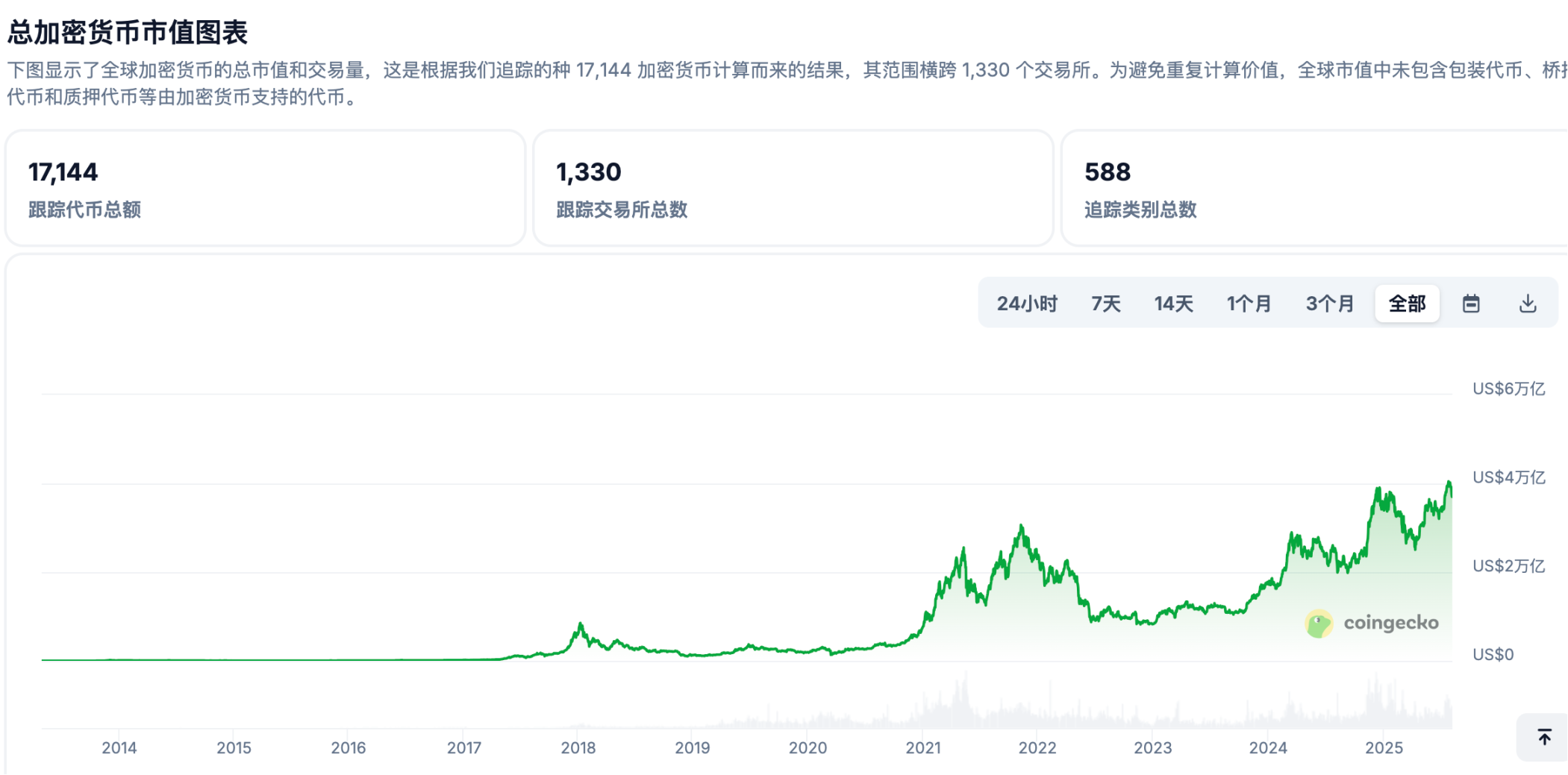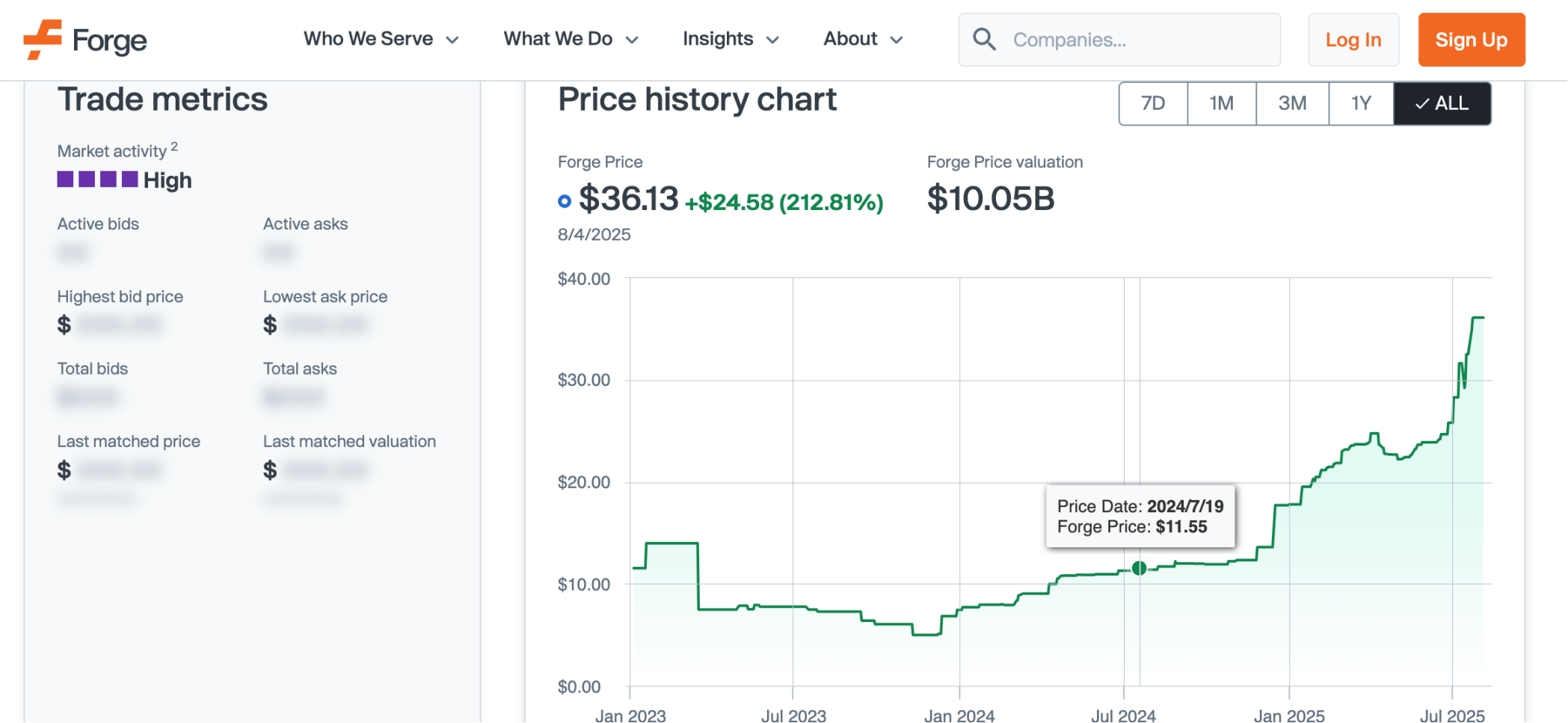Original author: Bright, Foresight News
Will the copycat season come again?
This is a question shared by nearly every crypto player. After all, during the previous bull market of 2020-2021, few people were calling for an "all-in" BTC. During the DeFi Summer, altcoins saw numerous quintuple increases in value. The total cryptocurrency market capitalization soared from approximately $200 billion in January 2020 to just over $3 trillion in November 2021. It's safe to say that 90% of those who truly emerged victorious in this bull market were altcoin enthusiasts.
However, the cruel reality is that new assets will definitely come, and the outbreak of a copycat season that is like cutting the feet to find the sword is no longer possible in reality.
The defeated army of altcoins
While many are still waiting for the altcoin season, four years later, the crypto industry has quietly approached the end of its bull market. From 2024 to mid-2025, the total market capitalization of cryptocurrencies has actually grown by a staggering 130%.
On November 15, 2021, BTC's highest point was around US$69,000, and the total market value of cryptocurrencies peaked at approximately US$3 trillion; on July 14, 2025, BTC's highest point was US$123,091, and the total market value of cryptocurrencies peaked at approximately US$3.91 trillion.
On the contrary, including the junk Memecoins that were issued during the meme boom, there are already millions of altcoins on the chain. This round, altcoins suffered a major defeat.

To this, perhaps all we can say is: Sorry, we failed.
The reason why Altcoin cannot be made great again is that the crypto industry, which upholds compliance as the main theme, is experiencing the pain of cutting off the fat that grew in the past barbaric period.
Wall Street's enclosure game
Under the trend of encryption compliance in the United States, the regular army of Wall Street, which was originally afraid to act rashly, began to flock to cryptocurrency, the "red zone" during the Biden administration, and at the same time planted the colonial flag of financial hegemony on the chain.
From a player's perspective, the competitive landscape of whales, retail investors, miners, and cryptocurrency institutions is gone forever. Retail investors, who once jokingly called themselves "Nasdaq and Dow Jones crypto traders," have effectively become the counterparties of professional Wall Street hedge funds.
From an asset perspective, the VC-organized and carefully designed low-circulation, high-market-cap strategy no longer works; unregulated Meme coins continue to lose blood after retail investors lose interest; and DeFi does not seem to have become the first choice for institutional hot money.
In fact, the first step for wealthy Wall Street institutions to enter the crypto market is to use their capital power to control Bitcoin, which is the most "decentralized" in the true sense and has the highest consensus in the crypto industry, and to gain the right to speak in the cryptocurrency industry, such as Grayscale's Bitcoin ETF; the second step is to infiltrate and expand the financial power they already control into crypto, attracting native crypto investors to switch investment categories, such as stock tokenization and altcoin "MicroStrategy" companies; the third step is to issue new crypto-related assets that comply with existing financial regulations and completely control the pricing power of crypto assets, such as crypto company IPOs.

The Wall Street hot money that crypto natives had hoped for didn't foolishly pour into the already-saturated "decentralized" market. In other words, they chose to play their own game, and not only that, they're forcing you to play theirs with their money.
If you can't beat them, join them.
The IPO boom is undercurrent
On June 5th, Circle went public on the New York Stock Exchange. Its stock price soared over 160% on its first day, subsequently soaring to a high of $289.99. This represented a staggering 9.64-fold increase from its IPO price of $31. During the same period, cryptocurrencies performed only mediocrely.

Circle's return on investment is the authentic flavor of the previous cryptocurrency altcoin season. Following this impressive success, a string of crypto-related companies announced plans for IPOs in the second half of 2025. These include US-based exchanges Kraken, FalconX, Gemini, and Bullish, as well as fintech companies and asset management institutions like Bitgo, Grayscale, and Figure. There's even news of OKX going public in the US. Besides the buzzing US stock market, South Korean exchange Bithumb announced plans to implement a two-step strategy of listing on both Kosdaq Korea and Nasdaq US, while Thai exchange Bitkub announced plans to list on the Stock Exchange of Thailand.
On July 30, the US exchange Kraken was rumored to be seeking to raise approximately $500 million in financing at a valuation of $15 billion, which once again stimulated the crypto industry.
Robinhood previously announced its entry into stock tokenization, even offering equity in top unlisted companies like OpenAI and SpaceX, officially sparking interest in pre-IPOs. With Kraken recently hyping its IPO prospects, private equity trading platforms like Forge offer entry and exit channels for those looking to sell and those hoping to buy in advance.
Generally speaking, investors can purchase shares in private companies through two methods: the P2P model and the SPV model. Taking Kraken as an example, the P2P model involves the platform matching Kraken equity holders with buyers, assisting both parties with Know Your Customer (KYC), due diligence, and contract signing. The SPV model involves the trading platform establishing a dedicated special purpose vehicle (SPV) to pool funds from buyers and purchase the target company's shares.
Currently, the price on the Forge platform is $36.13, with a valuation of approximately $10 billion. If Kraken can successfully go public with a valuation of $15 billion, current entrants may obtain excess returns of more than 50%.

In short, a crypto IPO is a rite of passage for the crypto industry. It promises global recognition, but it also means leaving behind those outdated childhood pastimes. Yes, I'm talking about those dreadful projects that couldn't calculate price-to-earnings ratios and were only good at creating PowerPoint presentations.
- 核心观点:山寨币时代终结,合规化主导加密市场。
- 关键要素:
- 加密货币总市值增长130%,山寨币溃败。
- 华尔街机构掌控比特币,主导加密话语权。
- 加密公司IPO潮涌现,合规化趋势加速。
- 市场影响:山寨币投资逻辑失效,机构主导市场。
- 时效性标注:中期影响。



